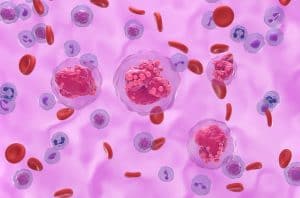
NICE completes Forxiga U-turn
pharmafile | June 26, 2013 | News story | Sales and Marketing | BMS, Forxiga, NICE
Bristol-Myers Squibb and AstraZeneca are celebrating after NICE reversed its decision from earlier this year and is now recommending their first-in-class diabetes drug Forxiga.
NICE rejected Forxiga (dapagliflozin) – a decision with which both companies professed themselves ‘disappointed’ – because it was not sure about its cost effectiveness.
The companies appear to have satisfied these concerns with new information, with Forxiga – approved in Europe last November – now recommended in final guidance in combination with either insulin or blood-sugar-lowering drug metformin as an option for treating or managing type 2 diabetes.
The sodium-glucose co-transporter 2 (SGLT2) inhibitor works by inhibiting the SGLT2 – a protein in the kidneys that allows glucose to be reabsorbed into the bloodstream – improving glycaemic control without increasing insulin secretion.
However, it has not been given the nod in combination with metformin and sulfonylurea, except for research as part of a clinical trial.
Bayer Healthcare also has cause to be pleased after NICE recommended its oral anticoagulant Xarelto (rivaroxaban) to treat pulmonary embolism (PE) and preventing recurrent deep vein thrombosis (DVT) and PE after acute PE in adults.
The decision is good news for patients too because it will bypass the problems many experience with warfarin – such as dose adjustment and interactions with other drugs – to achieve the same end, explained Professor Carole Longson, NICE Health Technology Evaluation Centre director.
“Rivaroxaban therefore represents a significant potential benefit for people with PE and DVT because it avoids the need to begin treatment with heparin and the subsequent transition to warfarin,” Longson said.
Finally, NICE has also recommended Astellas Pharma’s Betmiga (mirabegron) as an option for treating the symptoms of overactive bladder.
But other companies will be looking a little less cheery: Novartis’ Jakavi (ruxolitinib) has received the thumbs-down from NICE for the treatment of disease-related splenomegaly in adults with a rare blood cancer.
It was being reviewed in patients with primary myelofibrosis, or post polycythaemia vera myelofibrosis or post essential thrombocythaemia myelofibrosisi who also have an enlarged spleen.
While NICE thought Jakavi would be clinically effective, it was worried about money. Reflecting the austere mood of the times, NICE chief executive Sir Andrew Dillon said: “We have to be sure that the treatment is both clinically and cost effective, because money has to be diverted from elsewhere in the health service to pay for it.”
The other company with a long face will be Savient Pharmaceutical, whose Krystexxa (pegloticase) has not been recommended for severe debilitating chronic tophaceous gout.
Longson said there were “uncertainties around the assumptions in the manufacturer’s analyses, and the risk of adverse reactions, along with the high cost compared with the known benefit”.
Adam Hill
Related Content

NICE recommends migraine treatment for NHS use
The National Institute for Health and Care Excellence (NICE) has shared draft guidance recommending AbbVie’s …

GSK’s Jemperli recommended by NICE for endometrial cancer treatment
GSK has announced that the National Institute for Health and Care Excellence (NICE) has recommended …

NICE recommends SC treatment of AbbVie’s Tepkinly for patients with DLBCL
AbbVie has announced that the National Institute for Health and Care Excellence (NICE) has recommended …








